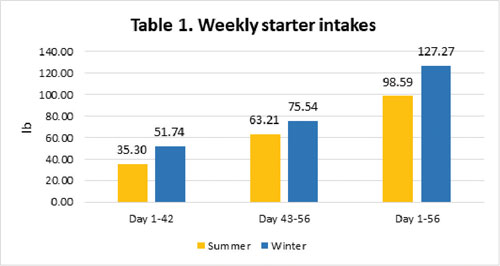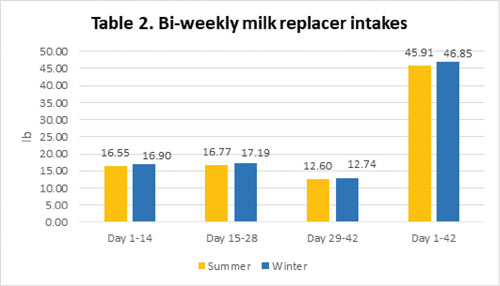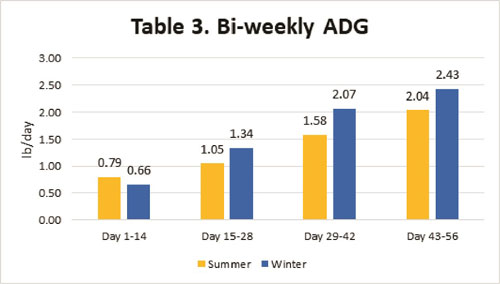
Under heat stress conditions, it is important to offer a high-quality, fresh and palatable calf starter such as Elite 18 to encourage intake and promote rumen development. The importance of consistently providing calves with fresh, clean water year round is especially vital during the hot season when calves are heat stressed. Adding a Rite-Lyte electrolyte feeding on hot days can help calves stay hydrated and maintain healthy metabolic homeostasis. Flies can have a significant impact on calf performance, so consider implementing a fly control strategy in your calf feeding program to limit fly stress on your calves.
Cold weather feeding strategies to keep calves healthy and growing include: 1) Delivering more energy in the milk or milk replacer with a fat supplement; 2) Feeding a higher-fat milk replacer formula; and/or 3) Feeding more milk volume of milk or milk replacer solution. More information on cold weather strategies can be found here.
To understand seasonal growth differences of young calves, 8 years’ worth of individual calf data from the University of Minnesota Southern Outreach and Research Center (SROC) was compiled and analyzed under the following parameters and conditions:
- All calves were fed Hubbard Feeds’ Elite 18 Texturized Calf Starter.
- All calves were fed Hubbard Feeds’ Calf Beginner 20-20 milk replacer at 10 oz. twice daily from days 1–35 and once daily from days 36–42 and were fully weaned by the end of day 42.
- All calves were housed individually, with intake and performance measurements taken through 56 days.
- Summer parameters = calves born in May, June or July.
- Winter parameters = calves born in November, December or January.




In short, calves born in the winter season gained, on average, 0.25 lb more per day than summer-born calves in the first 56 days of life, which equates to an additional 14 lb of total body weight gain. Winter-born calves also consumed more calf starter than summer-born calves in this period in order to meet the increased maintenance requirements brought on by cold stress.
It is important to not only recognize the impact that seasonality can have on calf performance, but also to understand how we can manage growing calves during these seasonal variations. Weighing calves, monitoring intakes and keeping organized calf health records are vital to benchmarking your calf program, which will allow you to make educated management decisions when the seasons begin to change. Work with your Hubbard Feeds representative to explore the products and services that could bring your calf program to the next level.


